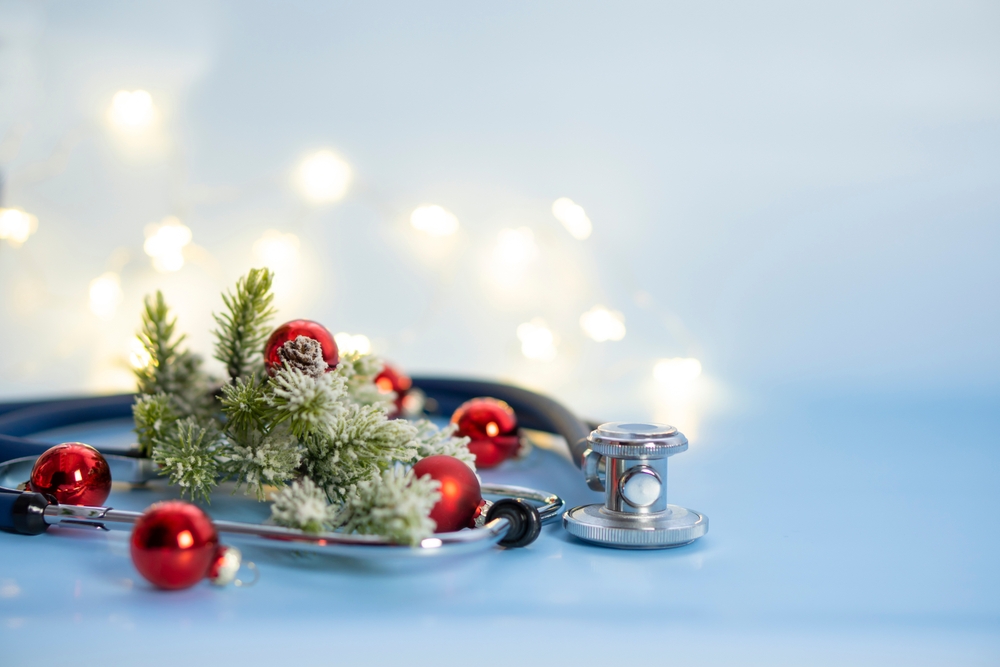I first learned about Christmas disease while preparing for a presentation on lab values many years ago. At first glance, I thought it was some sort of a seasonal condition brought on by the confluence of forced merriment, surges in alcohol and calorie intake, and exacerbated psychosocial stress during the holidays. It isn’t. Christmas disease, also known as hemophilia B and named after its first patient, Stephen Christmas, is a rare genetic bleeding disorder caused by a deficiency in clotting factor IX. My curiosity about public health concerns led me to ponder whether distinct health trends, both positive and negative, emerge during the holiday season, beyond the commonly known increases in colds, flu, respiratory syncytial virus, and especially, since March 2020, COVID-19.
Spike in heart attacks
The knowledge that globally more people suffer a coronary around the holiday season has been known for some time. A 2004 study published by the American Heart Association reported that December 25 witnesses the highest number of cardiac deaths compared to any other day of the year. The second and third highest numbers are recorded on December 26 and January 1, respectively. The study identified winter weather as a contributing factor, with cold temperatures constricting blood vessels and increasing the risk of heart attacks. Interestingly, another study discovered that, even in the temperate climate of Los Angeles County, there is a roughly one-third increase in heart attack deaths during December and January compared to June to September. Experts explain that the morbidity and mortality surges due to myocardial infarction during the holidays (Thanksgiving to New Year’s Day) are more likely due to caloric and alcohol overindulgence or the psycho-emotional stress of the holidays (long weekend with the in-laws; back to work on January 2nd, anyone?).
Holiday blues
In 2014, the National Alliance on Mental Illness reported that 64% of people with mental illness felt that the holidays make their conditions worse. This outcome has been linked to various factors such as being away from loved ones, personal mourning, the stress of gift-giving, financial strain, difficult interactions with family members, or the shorter days—all contributing to distinctive behavioral health challenges during the holidays. Individuals in recovery also face difficulties that may lead them to use alcohol and drugs. The Substance Abuse and Mental Health Services Administration offers helpful tips for supporting mental health, starting with acknowledging that it’s okay to feel unhappy during the holidays as a vital first step. Nurses across all practice settings should be intentional in supporting their patients’ mental well-being during the holidays, at the same time being mindful to practice meaningful self-care such as eating a balanced diet or going on a digital diet (internet detox).
Motor vehicle accidents during Christmas
The National Safety Council estimates that around 346 individuals could lose their lives on the roads during the Christmas holiday period. Traditionally, holidays prompt increased travel for families throughout the United States, with many opting for car travel. Because the holidays frequently involve celebrations with alcohol, fatal motor-vehicle crashes attributed to impaired driving increase. Winter road conditions also may increase the risk of accidents. Although it’s been said many times, many ways, the message is clear: No matter the season, don’t drink and drive.
Holiday reconciliation
Yes, I am referring to medication reconciliation. One of the members of the writing group I belong to mentioned that intergenerational family reunions during the holidays are a great opportunity for checking in with relatives and their meds. We’ve all been there. Whenever healthcare providers find themselves in a gathering, a conversation invariably turns into a consultation. And I think that’s okay.
Holiday gatherings also are occasions for people to reconcile social contact with loved ones. Social contact itself is lifesaving. Using data from various nationally representative longitudinal samples of the U.S. population, a study published by the National Academy of Sciences revealed that increased levels of social interaction are linked to a reduced risk of physiological dysregulation in a dose-dependent manner. In other words, maintaining strong social ties leads to a longer lifespan. The study also found that social isolation increased the risk of inflammation by the same magnitude as physical inactivity, and the effect of social isolation on hypertension exceeded that of clinical risk factors such as diabetes. For many hospitalized people, the nurses and assistive personnel become their primary point of social contact. Years ago, a patient told me how they looked forward to the routine visit of the housekeeper to his room, not because his room got mopped but because the social conversation made him feel irreplaceably human.
It is cool to give warmth
I’ve never been near chestnuts roasting on an open fire. But I can imagine it would be cozy and warm. Chestnuts, low in fat and high in vitamin C and antioxidants, and the heat from the fire are life essentials. There is another, underrecognized, biological necessity: warmth. Humanity won’t survive without it. And if it did, future humans would inherit a savage world. The sense of touch is mostly associated with warmth. I think of the back rub and bed bath that nurses provide to patients or when a nurse cradles a baby in their arm during feeding. They can’t be substituted by the cold unfeeling glow of a phone screen.
The lamp that is closely associated with Florence Nightingale is the symbolic representation of warmth that nurses bring with them in caring for patients, not just during the holidays but also in their day-to-day contact with patients. We can probably all agree that if we give authentic warmth, we won’t be left feeling cold because our inner thermostat knows that it’s just the right emotional temperature.




















